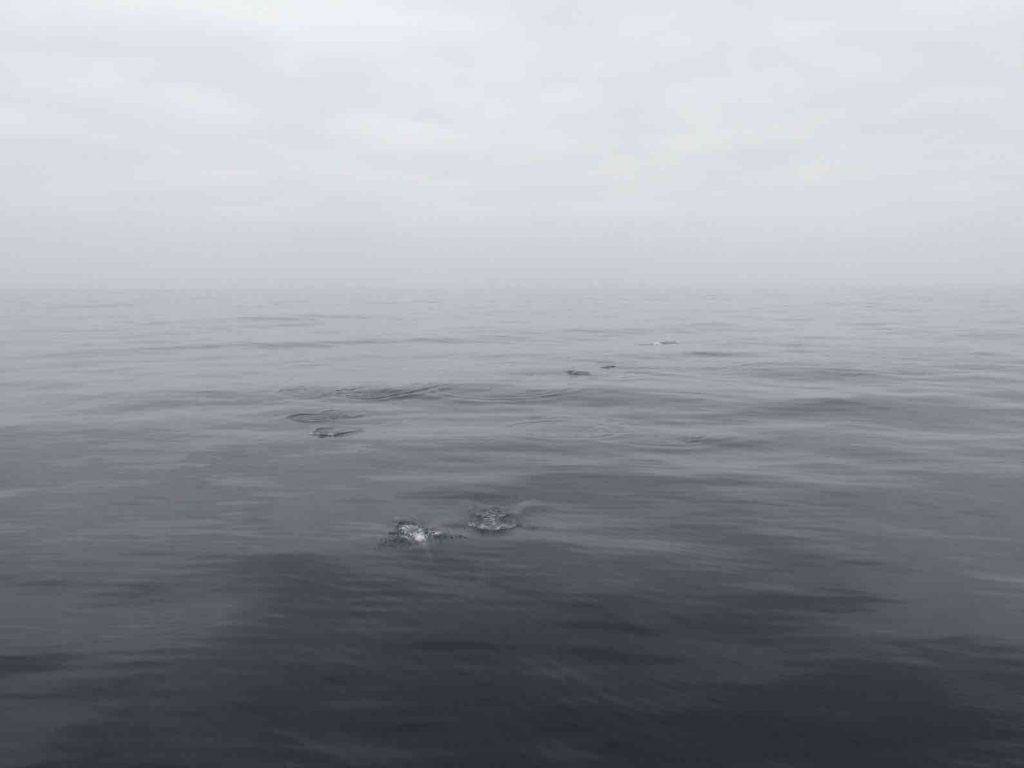By Leo Middleton, Scientist at Woods Hole Oceanographic Institute // Aboard the Bold Horizon //

It’s like stumbling through a thick forest and breaking out into a glade. A quiet has settled on this piece of sea as the waves calm. You can’t make a good map to get to this place. In the ocean, these glades are always moving, twisting, being born into life by the collision of great currents, then breaking apart, fracturing and sinking beneath the waves. The cold water brought from below by the coastal winds creates a fog that lies heavy on the sea surface, creating this small, calm spot.
Places like this can be found by things with nowhere else to go. Throw something off the side of a boat and it will likely end up somewhere like here. We’re at a convergence zone that attracts floating debris of all sizes. In particular, it attracts minuscule plankton, along with all the things that eat them and all the things that eat those things and so on and so on. All of it dragged hereby the undulating ocean.
Blue flashes of plankton can be seen leaning off the side of the boat. A pod of porpoise playing in the waves and feasting on the fish that came to feed. Slicks of water, even calmer than the rest, drift by the ship; signaling abrupt changes in temperature and saltiness where water rises up to the surface, bringing fish food from below.
This place was formed by great ocean currents passing by one other, mixing a little, trading parts of themselves. That’s how we found it: we followed the cold water that rises at the coast (just west of San Francisco) as it gets stirred out into the Californian Current. As the seasons change, these currents will move and alter, but for now they’re making this lush ocean glade, full of life and movement out in the open sea.
Soon this place will be gone again: nothing is static in the ocean. Then what happens to all this life? The millions of tiny creatures who thrive in this glade. They sink. Forced underneath the warmer water, the cold water subducts, bringing down with it all the drifting plankton and all those gases it stole from the air. That’s what we’re here to capture, the moment the water sinks. We’re trying to fill bottles full of the water that has sunk, to examine how the plankton respond to this sudden change in environment. Once the fog clears, we’ll see the planes flying overhead:they’re trying to capture this same process from the sky.
The ocean below will be thankful for this event, refreshed and renewed by new chemicals and nutrients that reach down beyond where light touches; continuing this cycle that’s been present for so much longer than we’ve known about it. The contact with the surface survives as a memory for this water, that will slowly degrade as it continues its meandering path across the oceans.
